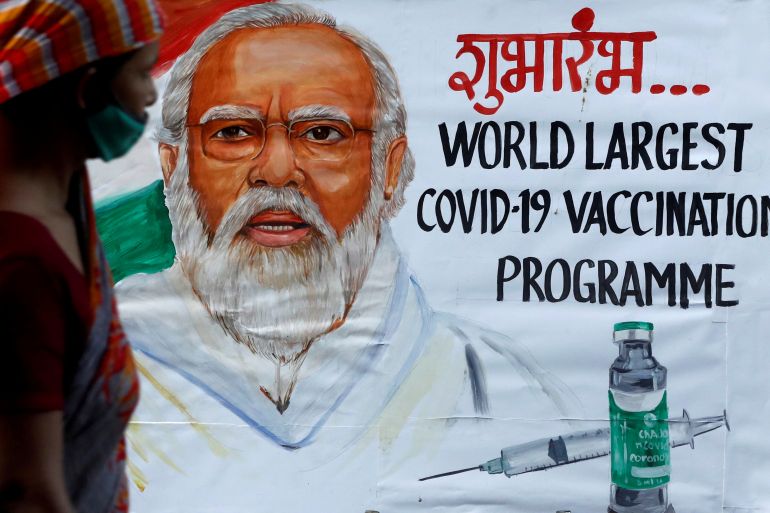Indian state imposes curbs after resurgence of COVID-19 cases
New restrictions, including nighttime curfews, imposed in Maharashtra as other states also report a rise in cases.

The Indian state of Maharashtra has ordered fresh restrictions on people’s movement and imposed nighttime curfews in some cities after a spike in coronavirus cases in recent weeks that came following months of a steady nationwide decline.
Maharashtra – home to 110 million people – reported nearly 7,000 new cases on Sunday, a steep rise from 2,000 cases earlier this month, with fears heightened by the appearance of new strains of the virus in parts of the country.
Keep reading
list of 3 itemsIndia COVID-19 cases continue to rise
Transparency concerns raised over India COVID-19 fund
All religious, social and political gatherings have been banned in Mumbai – Maharashtra’s capital and India’s financial hub – and the surrounding areas in the western part of the state.
“We just cannot afford to impose a second lockdown, people will have to follow the guidelines or else we could see a massive second wave,” said SD Patil, a member of the Maharastra government team monitoring the spread of the disease in a state that accounts for nearly one-fifth of India’s confirmed cases.
“People will have to stop attending social events and non-essential travel at this juncture,” he told Reuters on Monday.
Latest figures given by the health ministry on Monday showed that India reported 14,199 new infections and 83 new deaths on Sunday.
Life returned to normal in parts of India
While the total number of confirmed cases stands at more than 11 million, including 156,385 deaths, actual infections could range as high as 300 million, a government serological survey showed this month.
Infections have been plummeting in India since September, and life has already returned to normal in large parts of the country. In many cities, markets are bustling, roads are crowded and restaurants are nearly full.
But experts have been warning that the reasons behind India’s apparent success are not clear and that the country of nearly 1.4 billion people cannot afford to let its guard down.
Public health officials are now investigating potential mutations in the virus that could make it more contagious and render some treatments and vaccines less effective.
According to Maharashtra’s state surveillance officer, Dr Pradeep Awate, while the evolution of the virus was natural, the consequences of it mutating to transmit faster or become more virulent could be “catastrophic”.
Lockdowns have been reimposed in some parts of the state and authorities have banned all religious or cultural programmes.
In Mumbai, one of the worst-hit cities last year, masks and temperature checks were being made compulsory for tens of thousands of daily commuters using suburban trains that were restarted earlier this month.
Police warned they would fine people seen not wearing a mask.
In Pune, the state’s second-largest city, an official said the percentage of people testing positive for the virus had doubled in a little over two weeks.
“If we compare the positivity rate, fifteen days ago, it was 4.5 to 5 percent. But slowly it has been rising and reached 10 percent,” said Saurabh Rao.
Slow vaccination
Federal health officials said that an increase in new infections, albeit not as sharp as in Maharashtra, has also been flagged in Punjab state in northern India, and the central states of Madhya Pradesh and Chhattisgarh.
Officials added that a team of federal health officials had been rushed to the southern state of Kerala, where cases have hovered between 4,000 and 5,000 a day in the past month, a figure much higher than other states.
Though national trends are worrying, new daily cases are still well below a mid-September peak of nearly 100,000.
Indian Prime Minister Narendra Modi’s government has faced criticism for the slow pace of the vaccination roll-out. Authorities are expected to expand the vaccination programme to reach a government target of 300 million by July. But so far only nine million people have been inoculated.